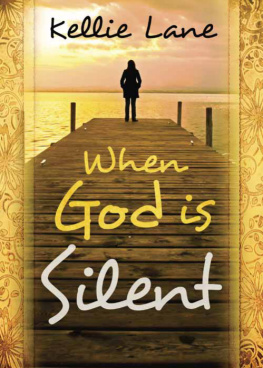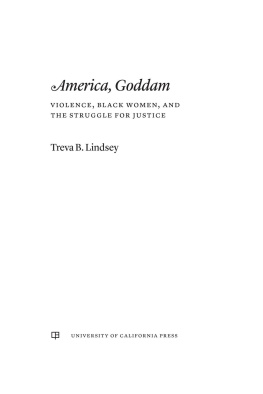FORCE AND FREEDOM
AMERICA IN THE NINETEENTH CENTURY
Series editors:
Brian DeLay, Steven Hahn, Amy Dru Stanley
America in the Nineteenth Century proposes a rigorous rethinking
of this most formative period in U.S. history. Books in the series
will be wide-ranging and eclectic, with an interest in politics at all
levels, culture and capitalism, race and slavery, law, gender, and the
environment, and regional and transnational history. The series
aims to expand the scope of nineteenth-century historiography by
bringing classic questions into dialogue with innovative perspectives,
approaches, and methodologies.
FORCE
AND
FREEDOM
BLACK ABOLITIONISTS
 and the
and the
POLITICS of VIOLENCE
KELLIE CARTER JACKSON

Copyright 2019 University of Pennsylvania Press
All rights reserved. Except for brief quotations used
for purposes of review or scholarly citation, none of this
book may be reproduced in any form by any means without
written permission from the publisher.
Published by
University of Pennsylvania Press
Philadelphia, Pennsylvania 19104-4112
www.upenn.edu/pennpress
Printed in the United States of America on acid-free paper
1 3 5 7 9 10 8 6 4 2
A Cataloging-in-Publication record is available from the Library of Congress
ISBN 978-0-8122-5115-9
For
Nathaniel Emmitt Jackson
Psalms 37:4
CONTENTS


Our white brethren cannot understand us unless we speak to them in their own language; they recognize only the philosophy of force.
James McCune Smith
Since August 1, 1834, free black Americans often celebrated Emancipation Day with parades, food, bazaars, and speeches, much like the Fourth of July. While the day marked the legal abolition of slavery in the British West Indies, it also represented what was possible for America: the eventual nonviolent abolition of slavery. However, for the well-known physician and abolitionist James McCune Smith, August 1 was incomplete, at best, and a farce, at worst. He refused to celebrate the holiday and criticized those who did. The son of former slaves, McCune Smith wrote an essay that appeared in Frederick Douglass Paper in August 1856. In the essay, he condemned British emancipation as merely a faulty compromise between slaves and their white masters, whom the British government generously compensated for their loss of property, thereby legitimizing the notion that slaves were less than human. Yet the government made virtually no effort to compensate the enslaved. A paltry twenty thousand pounds was appropriated for the education of the freed men, McCune Smith lamented. That is all given to the former slave in consideration of the robbery and embruting [sic] which has been perpetuated on him for centuries.
What vexed McCune Smith the most was the notion that British emancipation had been a boon conferred rather than a right seized upon and held. Consequently, he mocked celebrants by mimicking an old 1848 black-face minstrel song, Masa gib me holiday. Were black Americans to hope for
Harkening back to the electric feeling that inspired numerous slave rebellions, McCune Smith subsequently praised leaders such as Denmark Vesey, Nat Turner, and the brave men and women who fought during the Christiana Resistance of 1851. These violent acts effectively shed light on the future of black Americans, he contended. Our white brethren cannot understand us unless we speak to them in their own language; they recognize only the philosophy of force, he explained. According to McCune Smith, expecting white Americans to embrace black humanity required physical engagement. They will never recognize our manhood until we knock them down a time or two, he exclaimed. Black resistance and violence was central to understanding their antidote to American slavery.
Force and Freedom
In the history of the movement to abolish slavery, the shift toward violence among African Americans remains largely unaddressed. In addition, the ways in which black abolitionists utilized violence deserves a more sustained and nuanced analysis. Black resistance was central to abolitionism.
While praising the efforts of a few notable men and women abolitionists, most contemporary discussions of the subject routinely lament that nothing good can come from political violence.retreat from engaging in a complex understanding of the political purposes of violence limits both how we see and make use of the past. Within the field, there is a propensity to privilege the performance of nonviolence and deny the possibility and utility of violence as the great accelerator in American emancipation.
Historiography typically follows the chronological pattern of moral suasion in the 1830s, political abolition in the 1840s, and separatism and emigration in the 1850s. Some historians see the shift from moral suasion to violence as one of declension, with African Americans giving in to despair in the wake of the Fugitive Slave Act of 1850. Others see the antebellum period as the moment in which the maturation of a black nationalist consciousness calcified. I align my work with the more recent scholarship of Manisha Sinha, Patrick Rael, Matthew Clavin, and W. Caleb McDaniel, who see this moment as part of the creation of an alternative revolutionary tradition in an age of revolution. I see black abolitionism as a movement that began almost at the inception of Atlantic world slavery and understood the idea and experience of violence more than any other group.
Force and Freedom examines the political and social tensions preceding the American Civil War, as well as the conditions that led many black abolitionists to believe slavery could be abolished only through violent measures. By exploring black abolitionists shift from a campaign of moral persuasion in the 1830s to their push for more combative and violent strategies to end American slavery in the 1850s, I explain the various moments that cultivated their desire for force. The purpose of this study is fourfold: First, I draw scholarly attention to why black abolitionist leaders prioritized violence over nonviolence as a means for liberation. Second, I explore the factors that precipitated and accelerated this change of perspective toward the use of violence. Third, I address the ways in which black leaders arrived at a place of mutual agreement, differing with the tactics of various white abolitionist leaders who evoked and employed violence. Fourth, I reveal how the expanding influence of the black abolitionist movementfrom its early orators, to the black press, to the formation of militia groupsillustrates the power of black abolitionists to mobilize their communities, compel national action, and draw international attention. Within the racially charged context of antebellum America, I draw attention to the immense importance of violence to imagining emancipation and, in turn, freedom into being.
Next page








![Thomas Jenner - Kellie’s Diary Complete [All In One]](/uploads/posts/book/124160/thumbs/thomas-jenner-kellie-s-diary-complete-all-in.jpg)
 and the
and the